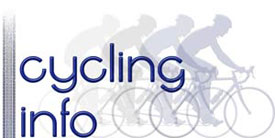
Advantages of Heart Rate Monitor for Cycle Training
- You can work out your maximum heart rate and use this as a guide to your different training zones.
- You can know when you are overtraining. When you are overtraining you will notice your resting heart rate will be either higher than average, or you are unable to get your heart rate very high. This can be an invaluable warning sign to reduce the quantity or intensity of your training. Top coaches agree that overtraining can be as damaging as under training.
- You can do targeted interval training. Interval training is the most important method of increasing your high level capacity. When we do intervals we are stretching our heart muscles and getting the body used to training in anaerobic zone. Without good-targeted interval training it is not possible to reach our full potential.
- During winter you can train at different base levels. To build up aerobic capacity it is recommended to spend a good % of your training routine working at 65%- 80% of our heart rate. This will increase our endurance and aerobic fitness. This “base” level of training is important for us to be able to do interval training later in the year.
Limitations of Heart Rate Monitor Training.
- Our heart rate can fluctuate for various factors such as altitude, weather and temperature. This can make it difficult to compare performances between different days.
- Heart Rate can lag effort. When beginning a training session our heart rate will climb slowly throughout the period. For example our first interval session at a certain power and effort level will give a lower heart rate than an interval session later in our training programme.
- Cycle coaches are increasingly seeing the benefits of using a power meter as a more reliable guide to effort. By using a power meter we can more accurately measure our effort and intensity.
Conclusion
Overall a heart rate monitor will be a useful tool for a keen cyclist. However it is important not to become a slave to your heart rate. It is not always an accurate indicator of effort. It is also important to try and listen to your body so you can notice the signs of overtraining e.t.c without the use of external aids.
Personally, I like to use a heart rate monitor when doing specific interval training. For recovery rides I don’t tend to bother, as it is fairly easy to have a rough idea of what a recovery rate should be. However, if you’re new to cycling it can be good to use heart rate monitor in more circumstances to show the different effort levels you’re putting in.
Reviews of Heart Rate Monitors
- Polar CS100 – speedometer, cadence and Heart rate monitor in one
Related
Buying Heart Rate Monitors
- Heart Rate monitors at Wiggle
- Heart Rate Monitors at Amazon.co.uk

Leave a Reply